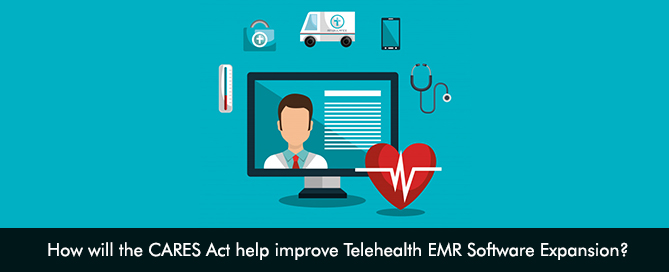The CARES Act stands for the Coronavirus Aid, Relief, and Economic Security Act which was signed in March 2020 to offer financial assistance to hospitals, businesses, and individuals that have been strongly affected by the COVID-19 pandemic. The pandemic has put a financial strain on hospitals and healthcare organizations as their revenue stream has not been steady in these uncertain and trying times. Telehealth has been recognized as a prominent healthcare tool amidst the pandemic to reach out to patients remotely. The CARES Act is supporting the expansion and access of telehealth across the United States.
CARES Act facilitating telehealth growth
- $25 million to be given to rural setups to prepare for telehealth services – Rural communities and areas are always neglected when it comes to quality care of patients. It’s a challenge in rural areas to set up telemedicine services due to the requirement of a steady internet facility. Under the CARES Act, $25 million is allocated to rural setups to expand and enhance telehealth solutions to curb the spread of the virus.
- Funding to public health and social services emergency fund – The CARES Act has allotted $27 billion in funding to public health and the social services emergency fund. Out of the total fund, $180 million is solely for the improvement of telehealth in rural areas and setups to enhance broadband access, hardware upgrades, and other telehealth requirements for rural communities for effective remote care delivery.
- Support to launch a new telehealth program and platform – The program aims to improve the internet and broadband connectivity for connected services. Video conferencing, online sessions and telehealth visits depend on a fast and reliable internet connection which can help connect caregivers and patients seamlessly and offer peace of mind to patients.
- Improving access to telehealth by uplifting restrictions – Under the CARES Act restrictions on Federally Qualified Health Centers (FQHCs) and Rural Health Clinics (RHCs) have been lifted for now to facilitate access to telehealth solutions. Medicare beneficiaries can be seen by providers in RHCs and FQHCs from their homes.
- Achieve hospice care admissibility through telehealth – The CARES Act has authorized healthcare providers to use the telehealth platform for hospice care. The aim is to keep doctors and patients safe from catching the virus and ensuring that patients who are critically ill can receive timely remote care.
Moving forward
The CARES Act and the funding offered are facilitating telehealth to help reduce the spread of the virus during the pandemic. It has helped the healthcare organizations and hospitals to reach out to larger population groups and has put rural communities on top priority to receive remote care through the robust platform. Telehealth is here to remain, as governments and healthcare professionals are seeing it as the most effective solution to fight the COVID-19 pandemic, furthermore, the virtual care tool improves the safety of medical staff and doctors and keeps the burden at hospital facilities at bay. This is the right time to implement a telemedicine EMR software system or expand your existing telehealth platform to provide better remote care options to struggling patients.








